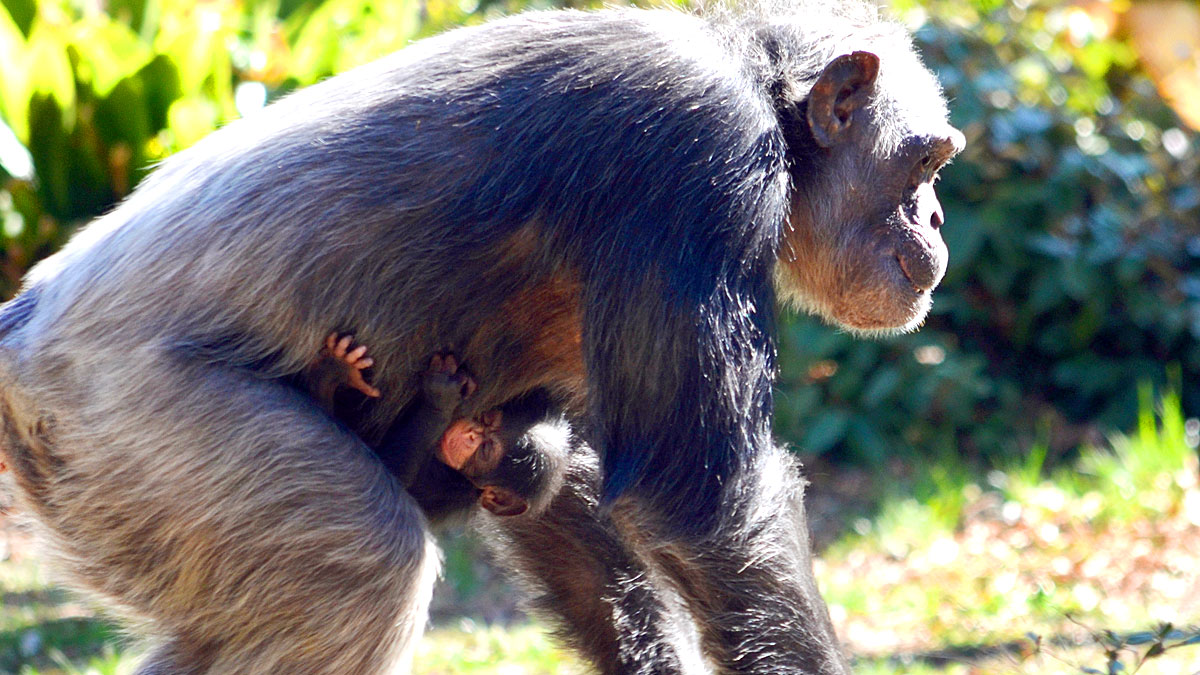

Finally, one other possibility comes to mind, the authors point out: While Gua showed no signs of learning human languages, her brother Donald had begun imitating Gua's chimp noises. Or perhaps it was the fact that Gua was becoming stronger and less manageable, and that the Kelloggs feared she might harm her human brother. It could be that the Kelloggs were simply exhausted from nine months of nonstop parenting and scientific work. But as for why, the Kelloggs, who are so specific on so many other points, leave the reader wondering. We are told only that the study was terminated on March 28, 1932, when Gua was returned to the Orange Park primate colony through a gradual rehabilitating process. Chimpanzee infants are totally dependent on their biological mother and learn life skills from living in their chimpanzee family. Our final concern is why the project ended when it did. As the Psychological Record authors describe: chimpanzee, Species ( Pan troglodytes) of great ape that inhabits the rain forests and woodland savannas of equatorial Africa, the closest living relative to humans.

The experiment, however, ended rather abruptly and mysteriously. As such, the Psychological Record authors write, the Kelloggs' experiment "probably succeeded better than any study before its time in demonstrating the limitations heredity placed on an organism regardless of environmental opportunities as well as the developmental gains that could be made in enriched environments."
#Baby chimpanzee facts manual#
They raised the two babies in exactly the same way, in addition to conducting an exhaustive list of scientific experiments that included subjects such as "blood pressure, memory, body size, scribbling, reflexes, depth perception, vocalization, locomotion, reactions to tickling, strength, manual dexterity, problem solving, fears, equilibrium, play behavior, climbing, obedience, grasping, language comprehension, attention span and others," the Psychological Record authors note.įor a while, Gua actually excelled at these tests compared to Donald.īut eventually, as NPR notes, Gua hit a cognitive wall: No amount of training or nurturing could overcome the fact that, genetically, she was a chimpanzee. Abandoning a human child in the wilderness would be ethically reprehensible, Kellogg knew, so he opted to experiment on the reverse scenario-bringing an infant animal into civilization.įor the next nine months, for 12 hours a day and seven days a week, Kellogg and his wife conducted tireless tests on Donald and Gua. Since his student days, Kellogg had dreamed of conducting such an experiment. He was fascinated by wild children, or those raised with no human contact, often in nature. Could a chimp grow up to behave like a human? Or even think it was a human? As later described in the Psychological Record, the idea was to see how environment influenced development. The couple planned to raise the chimp, Gua, alongside their own baby boy, Donald. It weans at 3.5-4.5 years, while still remaining reliant on its mother for a longer period, sometimes up to 10 years. On June 26, 1931, comparative psychologist Winthrop Niles Kellogg and his wife welcomed a new arrival home: not a human infant, but a baby chimpanzee.


 0 kommentar(er)
0 kommentar(er)
